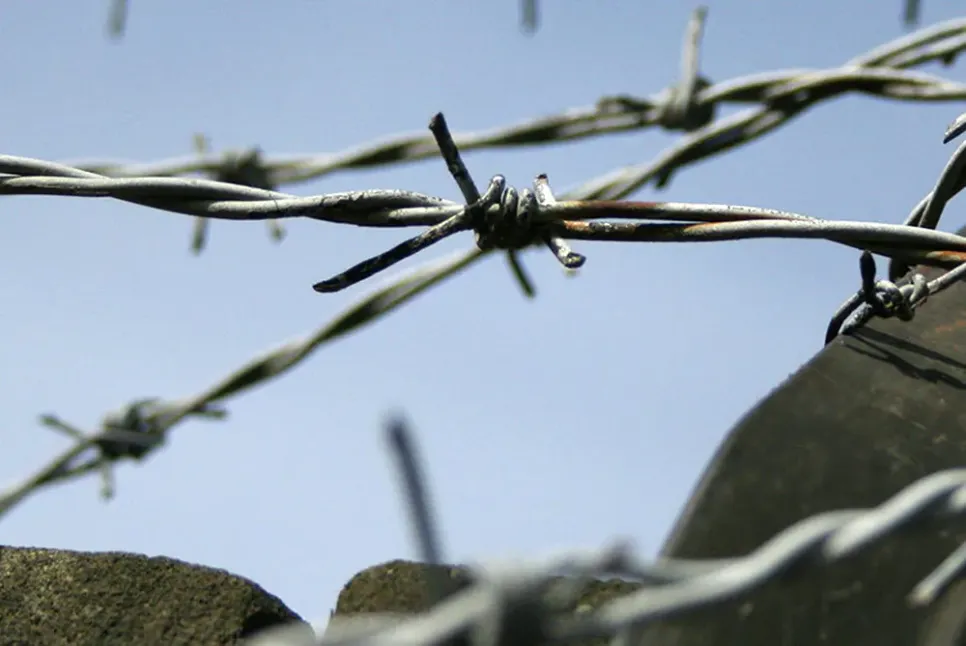
The excitement around barbed wire, caused by its appearance on the US market in 1874, quickly grew into commercial success for those involved in its manufacture and sale. It should be noted that until the First World War, no progress occurred in constructive and functional terms - the barbed wire remained unchanged.
At the peak of its military power, early-twentieth-century Germany was noted in world history not only for its colossal preparations, but also for several important inventions, including barbed tape and the use of barbed wire as an effective ground barrier to hold back enemy forces. The barbed wire was shaped into a spiral, after which the spiral was stretched, creating an impenetrable barrier. This invention was called the Bruno spiral, in keeping with its shape. At the same time, the reason for the shortage of barbed wire leads to the fact that German defense companies begin producing barbed tape from sheet metal. The tape became a cheaper analogue of barbed wire, but this did not mean that it had lost its competitive qualities. The stamped tape, like wire, begins to be wound onto a drum, giving the shape of a spiral, so a protective barrier fence appears with a denser concentration of turns. However, the quality of such a barrier was far from perfect, since cutting through the razor tape, having a standard set of tools with you, was not particularly difficult.
While the world was catching its breath after the First World War, the “war machine” continued to work on its mistakes, developing new types of weapons and defensive structures. The result is a new type of razor tape reinforced with steel wire. This approach made it possible to reduce the thickness of the sheet metal, while simultaneously increasing the deterrent potential of the razor tape. At the same time, reinforced twisted razor tape (ASRL) was quickly mounted and dismantled, providing an advantage in the rapid mobilization of forces.
ASKL complicated the task of the advancing infantry and, nevertheless, with a special tool with high cutting capabilities, it could be easily disarmed: the cutting layer was not fixed to the steel base, so the tape was easily wound up when its edge was bitten off.
Not so long ago, in the 70s of the twentieth century, Americans proposed a solution to the problem of ASCL resistance to mechanical stress. Reinforced barbed wire (RBR) appears, the edges of which are partially rolled, making it difficult to separate the barbed tape from the reinforcement.
Naturally, like any other design improvement, rolling affects the cost of production of ACL. To save on manufacturing costs, manufacturers decide to use wire staples to secure the coils. This negatively affects the strength of the ACL and its wear resistance.
Just a few years later, barbed wire manufacturers are solving the problem of ACL strength by replacing staples with stampings made from coiled and sheet steel. Now the spiral fence has become several times stronger than its previous incarnation, which brings the ACL one step closer to the title of a perfect defensive barrier.
Today in the world there are two widely used trademarks, under which the world's barbed wire manufacturers manufacture and sell their products. These are trademarks – Egoza and Concertina. The Egoza trademark united manufacturers from the CIS countries, and Concertina became the calling card of companies in North America and Europe.
Today you can easily buy Egoza barbed wire, the price of which is more affordable for domestic buyers.
A new turn in the development of barbed wire, as a product intended primarily to perform defensive tasks, is planned at the beginning of the third millennium, when Yu.V. Tkachenko proposes to use the engineering security system he developed, which allows for the rapid installation and dismantling of a barbed wire barrier on ships. Previously, sea vessels, protected along the perimeter of the ACL from pirate attacks, were forced to regularly update the barrier, since it had to be cut off every time during loading, repair and other work on the ship.
Note that Yu.V. Tkachenko owns several more patents for barbed wire, in particular a patent for the invention of ACL made of composite materials. The use of a composite allows you to completely get rid of problems with corrosion of the product, while simultaneously increasing the service life and reducing the cost.